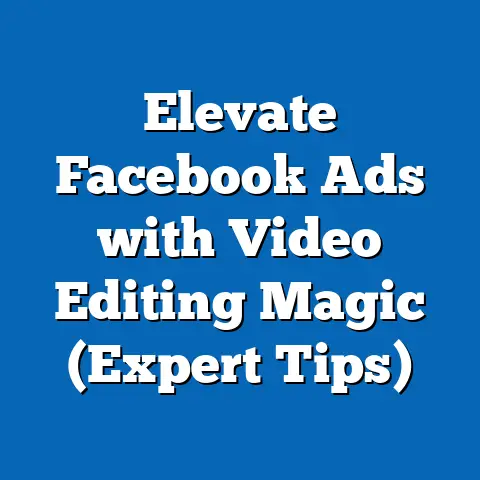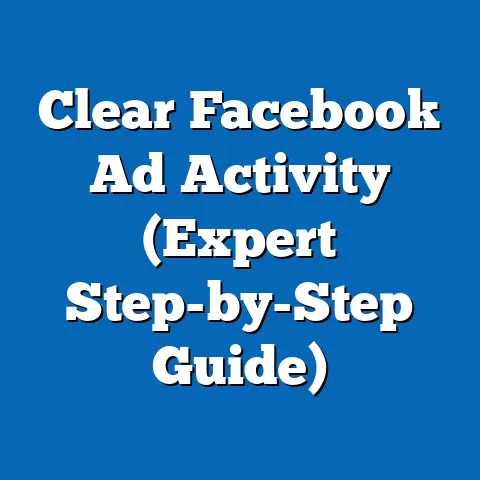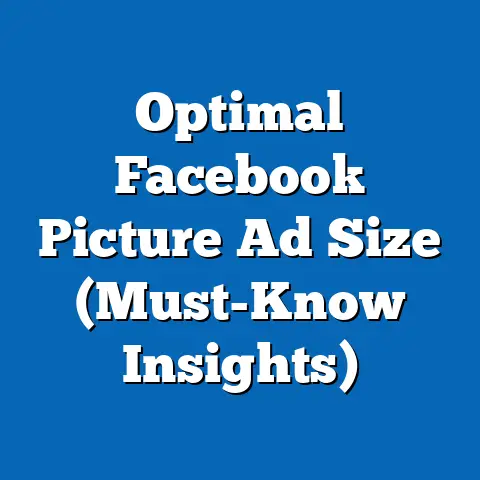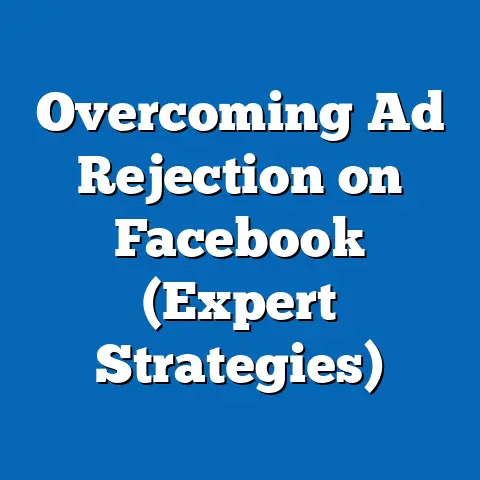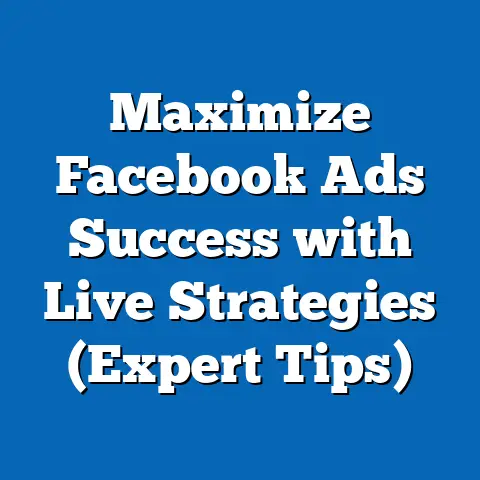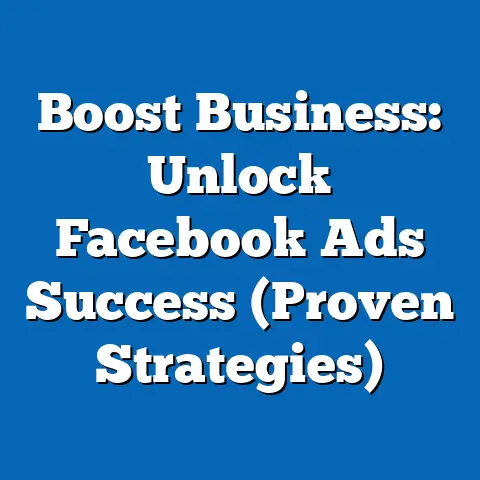Boost Facebook Ads: Unlock Profits (Proven Strategies)
Facebook advertising. It’s a phrase that can either excite you with the potential of reaching billions or make you cringe at the thought of another wasted ad budget. I’ve been there, wading through the complexities of campaign setup, targeting options, and creative fatigue. But through years of experience, countless A/B tests, and a healthy dose of trial and error, I’ve discovered that Facebook ads, when done right, are an incredibly powerful tool for driving real, tangible profits.
In today’s digital landscape, Facebook remains a dominant force. With billions of active users, it offers an unparalleled opportunity to connect with potential customers, build brand awareness, and ultimately, increase sales. But simply throwing money at Facebook ads isn’t enough. You need a strategic approach, a keen understanding of your audience, and a willingness to adapt and optimize your campaigns.
This isn’t just another generic guide filled with vague advice. I’m going to share proven strategies that I’ve personally used to unlock significant profits for my own business and my clients. We’ll dive deep into the art of crafting visually stunning ads, writing compelling copy that converts, targeting the right audience, leveraging the power of A/B testing, and mastering the secrets of retargeting. So, buckle up, because we’re about to embark on a journey to transform your Facebook ads from a cost center into a profit-generating machine.
The Power of Bold Designs
In the fast-paced, visually-driven world of social media, your ad has to grab attention instantly. Think of it as a battle for eyeballs. You’re competing with cat videos, political rants, and your cousin’s vacation photos. A bland, uninspired ad simply won’t cut it. That’s where the power of bold design comes in.
Bold designs are about more than just aesthetics. They’re about creating a visual impact that stops users in their tracks and compels them to learn more. According to a study by HubSpot, visuals are processed 60,000 times faster in the brain than text. That means your ad’s design has a fraction of a second to make a positive impression.
When I say “bold,” I’m not necessarily talking about neon colors and flashing animations (although those can work in certain contexts). I’m talking about a design that is:
- Visually Striking: Use high-quality images or videos that are relevant to your product or service. Avoid generic stock photos. Opt for authentic visuals that resonate with your target audience.
- Well-Composed: Pay attention to the composition of your ad. Use the rule of thirds, leading lines, and negative space to create a balanced and visually appealing layout.
- On-Brand: Your ad design should be consistent with your overall brand identity. Use your brand colors, fonts, and logo to create a cohesive look and feel.
- Mobile-Friendly: Remember that most Facebook users are on mobile devices. Ensure your ad design looks great on smaller screens.
Examples of Effective Bold Design:
- Airbnb: Their ads often feature stunning photography of unique properties and travel destinations. The visuals are aspirational and instantly transport you to another world.
- Dollar Shave Club: Known for their quirky and humorous videos, Dollar Shave Club uses bold visuals to stand out from the competition. Their ads are often unexpected and memorable.
- Nike: Nike’s ads are always visually impactful, often featuring athletes in action. The visuals are dynamic and inspiring, conveying a sense of energy and performance.
Key Takeaway: Don’t underestimate the power of visual appeal. Invest in high-quality design that captures attention, communicates your brand message, and compels users to click.
Crafting Compelling Ad Copy
A visually stunning ad might grab attention, but it’s the ad copy that seals the deal. Your ad copy is your opportunity to connect with your audience on an emotional level, explain the benefits of your product or service, and ultimately, convince them to take action.
I’ve seen countless ads with beautiful visuals but weak copy that fails to convert. It’s like having a Ferrari with an empty gas tank. You need both the visual appeal and the persuasive words to drive results.
Here are some tips for crafting compelling ad copy:
- Know Your Audience: Before you write a single word, understand your target audience. What are their pain points? What are their aspirations? What language do they use?
- Write Concise Headlines: Your headline is the first thing people will see. Make it short, attention-grabbing, and relevant to your offer.
- Focus on Benefits, Not Features: Don’t just list the features of your product or service. Explain how those features will benefit the customer. How will it make their life easier, better, or more fulfilling?
- Use Strong Action Verbs: Start your call-to-action with a strong action verb, such as “Shop Now,” “Learn More,” “Sign Up,” or “Get Started.”
- Create a Sense of Urgency: Use language that creates a sense of urgency, such as “Limited Time Offer,” “While Supplies Last,” or “Don’t Miss Out.”
- Tell a Story: Storytelling is a powerful way to connect with your audience on an emotional level. Share a customer success story, or tell a personal anecdote that relates to your product or service.
Examples of Effective Ad Copy:
- “Tired of shaving every day? Get smooth, hair-free skin with our laser hair removal treatments. Limited time offer: 50% off your first session!” (This ad focuses on the benefit of hair-free skin and creates a sense of urgency with a limited-time offer.)
- “Join thousands of entrepreneurs who are building successful online businesses with our all-in-one platform. Get a free 14-day trial today!” (This ad highlights social proof and offers a free trial to encourage sign-ups.)
- “Remember that trip you always dreamed of taking? Make it a reality with our flexible travel payment plans. Learn more and start planning your adventure today!” (This ad taps into the audience’s aspirations and encourages them to learn more about travel payment plans.)
Key Takeaway: Your ad copy is just as important as your design. Write persuasive copy that connects with your audience, highlights the benefits of your offer, and compels them to take action.
Targeting the Right Audience
You could have the most visually stunning ad and the most compelling copy in the world, but if you’re showing it to the wrong people, it’s all for naught. Targeting the right audience is crucial for maximizing the ROI of your Facebook ad campaigns.
Fortunately, Facebook offers a wide range of targeting options that allow you to reach specific demographics, interests, behaviors, and even connections. You can target people based on:
- Location: Target people who live in a specific city, state, or country.
- Demographics: Target people based on age, gender, education, relationship status, and job title.
- Interests: Target people based on their interests, hobbies, and activities.
- Behaviors: Target people based on their purchase behavior, device usage, and travel habits.
- Connections: Target people who are connected to your Facebook page or event.
In addition to these basic targeting options, Facebook also offers two powerful tools:
- Custom Audiences: Create custom audiences based on your existing customer data, such as email addresses, phone numbers, or website visitors. This allows you to target people who are already familiar with your brand.
- Lookalike Audiences: Create lookalike audiences based on your custom audiences. Facebook will identify people who share similar characteristics to your existing customers, allowing you to expand your reach and find new potential customers.
Tips for Effective Targeting:
- Start with a Broad Audience: If you’re not sure who your target audience is, start with a broad audience and then narrow it down based on performance data.
- Segment Your Audience: Don’t target everyone with the same ad. Segment your audience based on demographics, interests, or behaviors and create ads that are tailored to each segment.
- Use Layered Targeting: Combine multiple targeting options to create a more precise audience. For example, you could target people who are interested in fitness, live in a specific city, and are between the ages of 25 and 35.
- Test Different Audiences: A/B test different audiences to see which ones perform best.
- Use Audience Insights: Use Facebook’s Audience Insights tool to learn more about your target audience, including their demographics, interests, and behaviors.
Key Takeaway: Don’t waste your money showing your ads to the wrong people. Use Facebook’s targeting options to reach your ideal customers and maximize your ROI.
Utilizing A/B Testing for Optimization
Facebook advertising isn’t a “set it and forget it” activity. It requires constant monitoring, analysis, and optimization. And the best way to optimize your campaigns is through A/B testing.
A/B testing, also known as split testing, is the process of comparing two versions of an ad to see which one performs better. You can test different elements of your ad, such as:
- Headline: Test different headlines to see which one grabs the most attention.
- Body Copy: Test different body copy to see which one is most persuasive.
- Image/Video: Test different images or videos to see which one resonates best with your audience.
- Call-to-Action: Test different calls-to-action to see which one drives the most conversions.
- Targeting: Test different audiences to see which one performs best.
How to Set Up A/B Tests:
- Choose One Element to Test: Don’t test multiple elements at once, or you won’t know which one is responsible for the results.
- Create Two Versions of Your Ad: Create two versions of your ad that are identical except for the element you’re testing.
- Run Your Ads Simultaneously: Run both versions of your ad simultaneously for a sufficient period of time (at least a week) to gather enough data.
- Analyze the Results: Analyze the results to see which version of your ad performed better.
- Implement the Winning Version: Implement the winning version of your ad and continue testing other elements.
Tips for Effective A/B Testing:
- Start with High-Impact Elements: Focus on testing elements that are likely to have the biggest impact on performance, such as the headline or image.
- Test One Element at a Time: As mentioned earlier, testing one element at a time ensures you know what’s driving the results.
- Use a Control Group: Use a control group to compare your test results against.
- Track Your Results: Track your results carefully and document your findings.
- Be Patient: A/B testing takes time and patience. Don’t expect to see results overnight.
Key Takeaway: A/B testing is essential for optimizing your Facebook ad campaigns. By testing different elements of your ads, you can identify what works best and continuously improve your performance.
Leveraging Retargeting Strategies
Not everyone who sees your ad will convert immediately. In fact, most people need to see your ad multiple times before they’re ready to make a purchase. That’s where retargeting comes in.
Retargeting is the process of showing ads to people who have already interacted with your brand, such as visiting your website, watching your video, or engaging with your Facebook page. This allows you to re-engage potential customers who are already familiar with your brand and increase your chances of conversion.
Different Retargeting Strategies:
- Website Retargeting: Show ads to people who have visited your website.
- Video Retargeting: Show ads to people who have watched your video.
- Engagement Retargeting: Show ads to people who have engaged with your Facebook page or event.
- Dynamic Product Ads: Show ads for specific products that people have viewed on your website.
Tips for Effective Retargeting:
- Segment Your Retargeting Audiences: Don’t show the same ad to everyone who has visited your website. Segment your retargeting audiences based on their behavior and create ads that are tailored to each segment.
- Use Different Messaging: Use different messaging for your retargeting ads than you use for your initial ads. Focus on overcoming objections and addressing concerns.
- Offer Incentives: Offer incentives, such as discounts or free shipping, to encourage conversions.
- Use Frequency Capping: Don’t bombard people with too many ads. Use frequency capping to limit the number of times someone sees your ad.
- Exclude Converters: Exclude people who have already converted from your retargeting campaigns.
Key Takeaway: Retargeting is a powerful way to re-engage potential customers and increase your conversion rates. By showing ads to people who have already interacted with your brand, you can stay top-of-mind and increase your chances of making a sale.
Measuring Success and Adjusting Strategies
The final piece of the puzzle is measuring your results and adjusting your strategies accordingly. It’s not enough to simply launch your campaigns and hope for the best. You need to track your metrics, analyze your data, and make informed decisions to improve your performance.
Key Metrics to Track:
- Impressions: The number of times your ad was shown.
- Reach: The number of unique people who saw your ad.
- Click-Through Rate (CTR): The percentage of people who clicked on your ad.
- Cost Per Click (CPC): The average cost you paid for each click on your ad.
- Conversion Rate: The percentage of people who completed a desired action, such as making a purchase or filling out a form.
- Cost Per Acquisition (CPA): The average cost you paid for each conversion.
- Return on Ad Spend (ROAS): The amount of revenue you generated for every dollar you spent on advertising.
How to Analyze Your Data:
- Use Facebook Ads Manager: Facebook Ads Manager provides a wealth of data about your ad campaigns. Use it to track your metrics, analyze your performance, and identify areas for improvement.
- Segment Your Data: Segment your data by demographics, interests, behaviors, and placements to see which segments are performing best.
- Identify Trends: Look for trends in your data to see what’s working and what’s not.
- Use A/B Testing: As mentioned earlier, A/B testing is a great way to optimize your campaigns and improve your performance.
Key Takeaway: Measuring your success is crucial for optimizing your Facebook ad campaigns. By tracking your metrics, analyzing your data, and making informed decisions, you can continuously improve your performance and maximize your ROI.
Conclusion
Unlocking profits with Facebook ads is not a magical formula, but a strategic process. It requires a combination of bold designs, compelling copy, precise targeting, A/B testing, retargeting, and diligent measurement.
I’ve shared the strategies that have worked for me and my clients, but the key is to adapt them to your specific business and audience. Don’t be afraid to experiment, test new ideas, and learn from your mistakes.
Remember, Facebook advertising is an ever-evolving landscape. Stay up-to-date with the latest trends, best practices, and platform updates. By continuously learning and adapting, you can stay ahead of the competition and unlock the full potential of Facebook ads.
So, go out there, implement these proven strategies, and start driving real, tangible profits with your Facebook ads. The power to transform your ad campaigns is in your hands.

